More about Dream of a Sunday Afternoon in Alameda Central Park
- All
- Info
- Shop
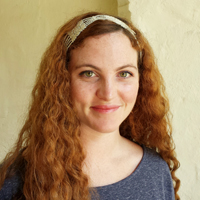
Sr. Contributor
It's hard to show Dream of a Sunday Afternoon in Alameda Central Park when the city it's in is mostly Catholic.
Why would a hotel agree to house a 50x13 foot fresco weighing 7 tons only to cover it with a screen? Because there is no God! Or rather, “God does not exist.”
This may seem dramatic but it’s true! Rivera was asked by the architect of the newly built del Prado Hotel, Carlos Obregon Santacilia, to create a mural for the hotel’s restaurant, the Versailles. Rivera imagined a fabulous fresco depicting childhood scenes in Alameda Park combined with important figures in Mexican history to showcase the oppressions and triumphs of the people. In doing so he included the image of a man named Ignacio Ramirez. Mr. Ramirez was a student at the Academy of Letran who deduced that mankind supported itself, thus nullifying a need for God. The priests on the faculty didn’t take kindly to Ramirez’ plan to speak to the school about his “God is useless” theory. It was only through the intervention of Father Lacunza, a man who later became the Mexican Archbishop that he was allowed to speak. In a moment that stands for a balance in religious doctrine and science (take note Tea Party) Father Lacunza insisted Ramirez speak and then invited him to become a member of the Academy based on his superior logic.
Our artist thought the Ramirez’ anecdote was a lovely representation of freedom of expression so he painted Ramirez holding a small piece of paper (2 inches by Rivera’s estimate) containing the words “God does not exist.” Like the priests before them, the hoteliers were not pleased by the phrase and ordered Rivera to remove it. He refused and after a series of protests for and against the painting involving numerous acts of vandalism, a compromise was reached that the painting would remain intact but hidden by a retractable screen that could be removed at the request of those willing to tip handsomely. According to Rivera the screen wasn’t removed until the Archbishop of Philadelphia showed up and shamed the hotel owners by saying, “The defamatory acts and attitudes shown in the recent attacks upon this work of art… [are] not only a violation of the most important concepts of the Catholic Church, but in opposition to the policies laid down by His Holiness, the Pope.” In other words, you’re embarrassing yourselves. God seemed to agree with his Eminence as the hotel, but not the mural, was destroyed in the 1985 Mexico City Earthquake. The piece was then moved to its own space, the Museo Mural Deigo Rivera adjacent to Alameda Park.
As you can see, Ramirez is far from the only figure in this fresco (try saying that 10 times fast). Listed from left to right are just a few of the more notable characters in Rivera’s mural of memories:
Hernán Cortés – depicted here with bloody hands, he was the Spanish Conquistador who colonized Mexico and toppled the Aztec Empire.
Juan de Zumárraga- the first bishop of Mexico, he was also an Inquisitor, a detail referenced by the burning bodies above him. Fun fact, the western section of Alameda Park is known as El Quemadero or The Burning Place because it was the hot spot for burning people during the Inquisition.
José Julián Martí Pérez- the "Apostle of Cuban Independence," this dude devoted his life to liberty and was killed in a bold 2 person attempt to charge the Spanish during the Battle of Dos Rios… brave but unwise, it was midday and he rode a white horse.
Young Diego Rivera and Frida Kahlo- Rivera was 21 years older than Kahlo, but here we see that age gap switched. Rivera portrayed himself as a child amidst a group of wealthy looking women and next to La Calavera Catrina. During Rivera’s childhood Dictator Porfirio Diaz policed the park allowing only the upper classes to use it, though Rivera was from a rich family, this mistreatment of the masses sparked some of his earliest resentment towards the bourgeoisie.
La Calavera Catrina- The “Dapper Skeleton” is based on an etching by Mexican printmaker Jose Guadalupe Posada (seen here standing next to his creation). Fashioned as a jab at Mexican natives who too readily adopted the clothes/culture of their European oppressors, she has become a major symbol in Mexican Día de los Muertos observances.
José de la Cruz Porfirio Díaz Mori- Mexican soldier in the Franco-Mexican War who took over the government in an 1876 coup and ruled for 35 years. The crappier version of Robin Hood, he made the rich richer and the poor poorer, directly resulting in the Mexican Revolution.
Featured Content
Here is what Wikipedia says about Sueño de una Tarde Dominical en la Alameda Central

Sueño de una tarde dominical en la Alameda Central or Dream of a Sunday Afternoon at Alameda Central Park is a 15.6 meter wide mural created by Diego Rivera. It was painted between the years 1946 and 1947, and is the principal work of the Museo Mural Diego Rivera adjacent to the Alameda in the historic center of Mexico City.
Check out the full Wikipedia article about Sueño de una Tarde Dominical en la Alameda Central


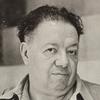


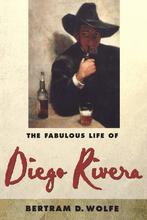









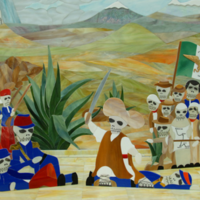
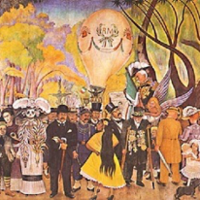
Fantastic fresco! I remember seeing it first in the Dreams Demystified Dream Dictionary back in 2022.